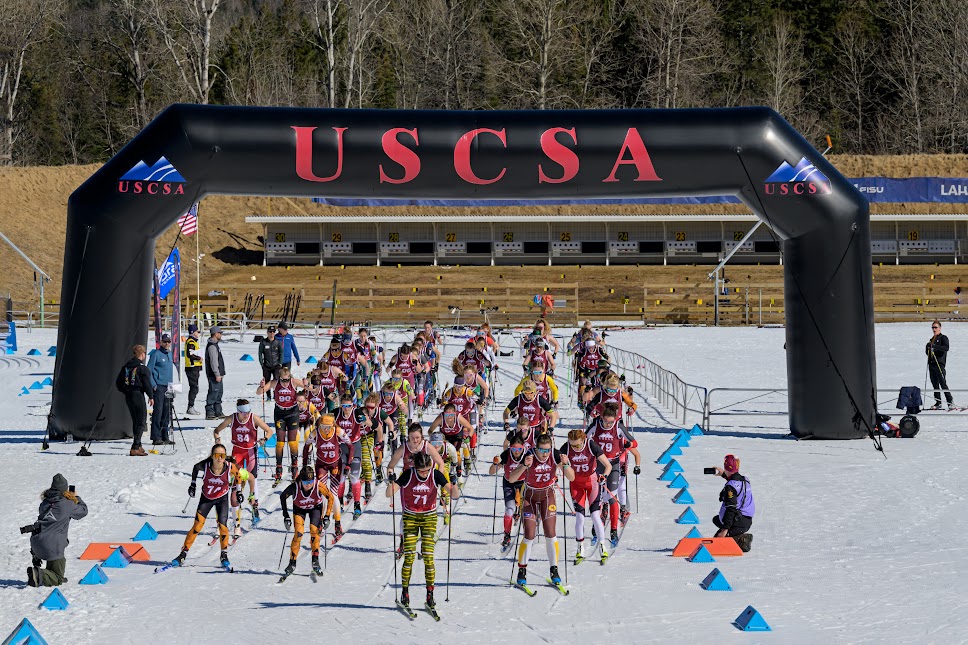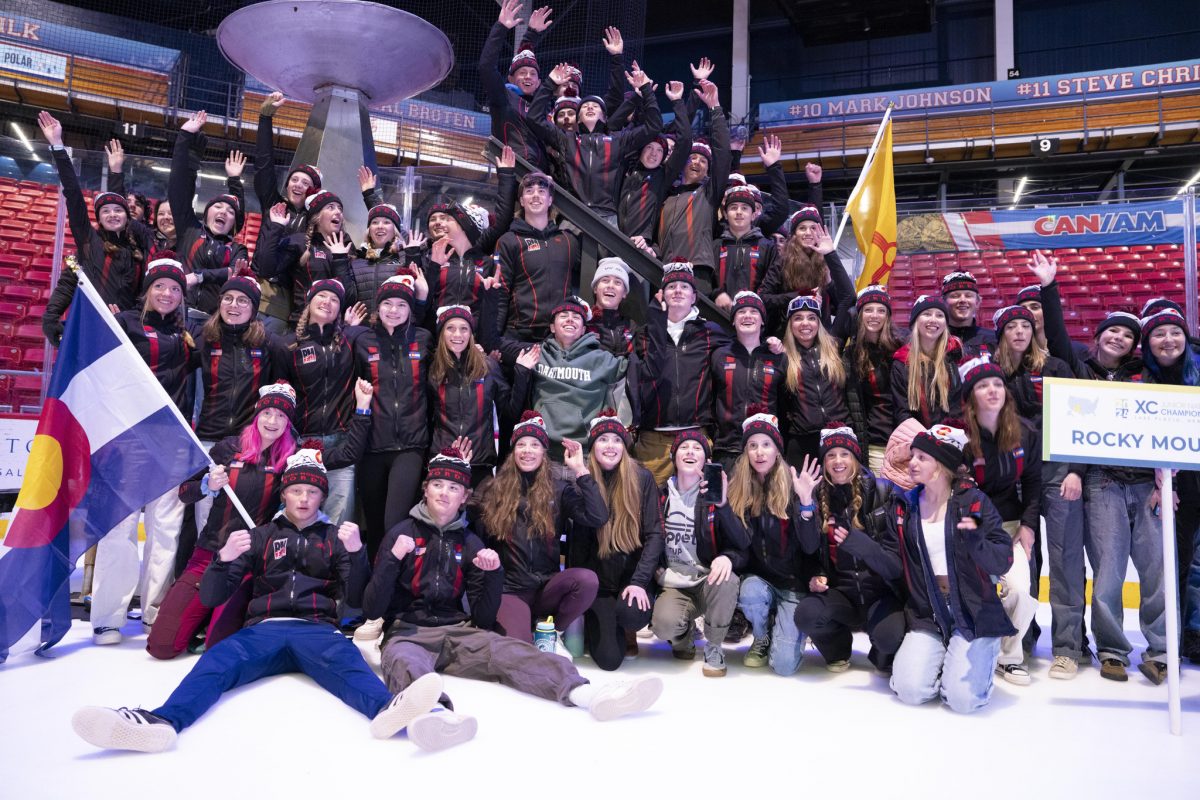Our recent series on biathletes facing the question of when and whether to go to college (parts one, two, and three) produced more interview material than we could fit into the three-part sequence, but we wanted to share a few more of the ideas with you anyway. What do biathletes do if they miss a target in a relay? They use a spare round. This week, we’re presenting you with short briefs on a few lingering topics.

When Annelies Cook decided to attend the University of Utah in the fall of 2006, it was because she needed a change. After pursuing biathlon full-time at the Maine Winter Sports Center to round out her junior career, Cook had been unsure what to do next, so she had returned to her home in upstate New York and jumped back into ski racing, battling against current U.S. Ski Team members Liz Stephen and Ida Sargent in NENSA’s Eastern Cup series.
It was fun. She wanted to ski more. So she went to Utah.
But what she found had another added bonus – she got to ski, do high-level training with her teammates (some of whom were, like her, older and, unlike her, from Europe), and get a degree, but she also got paid.
“I was very fortunate because I had a scholarship,” Cook told FasterSkier last fall. “Eli [Brown] did his best to spread out his scholarship money between as many of his athletes as possible, so I don’t think anyone had a full scholarship, but a lot of us had 70%, which basically meant free tuition plus $300 per month for living expenses.”
Not every biathlete who has gone to college has seen such a financial lure: Laura Spector, Carolyn Bramante, and now Ethan Dreissigacker and Carly Wynn attend Dartmouth College, which does not offer athletic scholarships. Neither does Bowdoin College, the alma mater of Walt Shepard. Several top juniors, including Kelly Kjorlien, Casey Smith, and Sam Dougherty, are currently at Montana State University, but the men do not ski for the college and as such don’t see even the possibility of a scholarship.
Not being on a scholarship, of course, has its benefits as well, like an increased ability to focus on biathlon if an athlete so chooses. Dartmouth coach Cami Thompson pointed out that she didn’t pressure the biathletes on her team to focus on college racing: “[other schools] do give you scholarships and they expect you to produce for them, but we’re not bound by that because we don’t give you anything!”
But both Cook and Lowell Bailey, who went to the University of Vermont, decided to leave biathlon for the majority of their college careers and focus on skiing, reasoning that if they did return to biathlon, added ski speed would be a benefit. With endurance training as their main goal, scholarships sweetened the deal.

“For some people, maybe money isn’t a big deal,” Bailey said in an interview. “But for a lot of people, for me I know, it was really hard for a little while to make ends meet, and I was really struggling on the financial side. Had I had the same level of support that I have now, would I have made the same decision? Probably, so I’m not saying that it was the only factor for me deciding to go to UVM or not, but it was a big factor.”
Both Brown and Al Serrano, Bailey’s coach at UVM, knew that athletes like Bailey were facing tough choices about whether they could continue in nordic sports with so little financial support, and tried to use their clout in offering scholarships to U.S. juniors.
“We had a very unique team,” Bailey said. “I might remember this wrong, but we had the only team of all Americans for UVM, because previous to that it had always been European recruits, and after that, too. So [Serrano] had recruited some of the best nordic skiers from the junior ranks in the country. We had a really talented team and we motivated each other, and I think we trained at a really high level.”
Brown didn’t go quite that far – some of Cook’s teammates were European. But even though he did recruit foreign skiers to bolster his team’s speed, Brown spent a lot of time thinking about whether it was the right thing to do.
“Just because [skiers] have a lot of training under their belt, they could turn out a lot of different ways,” Brown said. “Just because they have a different color passport doesn’t mean that it was a good recruiting choice. Some of those people are coming over because they didn’t make it in the big show, and maybe that’s even the norm for the European recruits. But [on the other hand] maybe they still love it enough and enjoy this new feeling of being on a team that they can really contribute.”
Cook, for her part, said that she benefitted from having older, more experienced teammates to chase and learn from. But in a perfect world those older, more experienced skiers would be Americans – racers who perhaps took a few years off after high school, but who could use the financial help offered by state universities.
“My hope is to make this puzzle piece fit, of NCAA skiing in the U.S. development pipeline, and to have more scholarship dollars end up going to American kids,” Brown said. “The only way that’s going to happen, to raise the level so that we don’t need the Europeans as much, is if they are more mature.”
Even now, top biathletes and skiers can take advantage of the scholarships offered to not only gain the financial freedom to spend their time training, but also to get onto a team where they don’t have to worry about logistics. That, said Cook, was also important.
“I was totally set up at Utah,” Cook explained. “I didn’t have to worry about anything – everything was organized. It was laid out for you. We had coaches, we had vans, we had transportation every weekend and when we went somewhere we had a stipend for food. And 75% of the team had some kind of support. That’s something that I don’t think very many people would want to turn down, because it’s hard to pay for an education and if you can get one without paying, that’s pretty amazing.”
Bailey agreed.
“A university can offer a kid a scholarship, and at the end of four years a degree that you can then use once your athletic career is over,” he said. “I think those are two huge benefits that a university ski team can offer, that quite honestly are not [otherwise] available. Even though I’ve put my heart and soul into the sport of biathlon, it’s not like they’re handing me a degree at the end of the day. It really was the opportunity of a lifetime – I never would have guessed that I would have been able to go to college for free, and to have that experience and that caliber of an education.”



